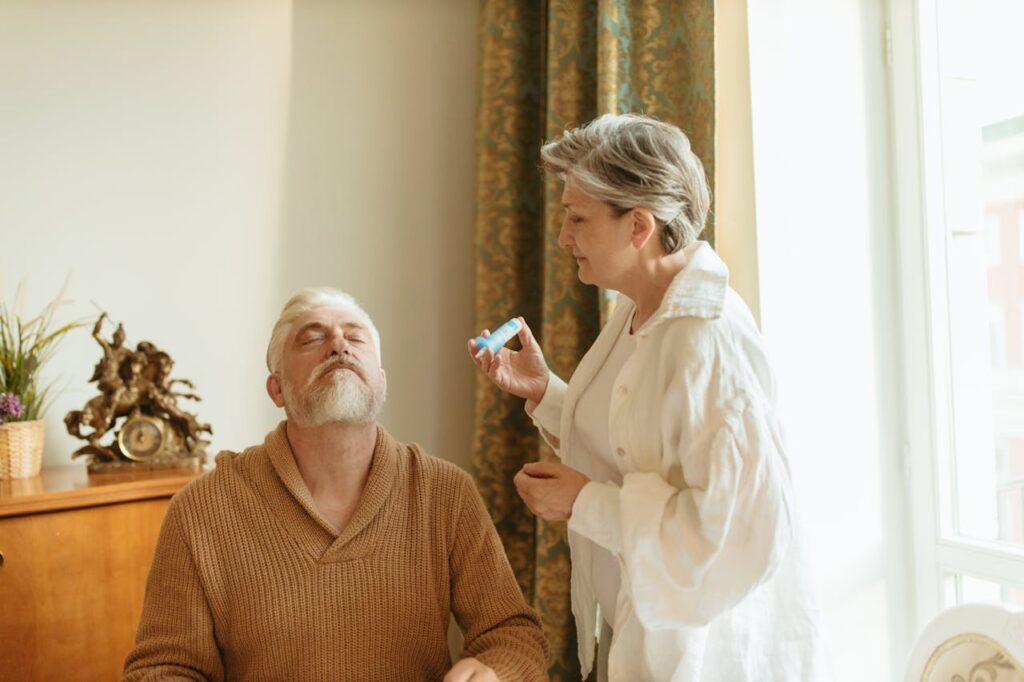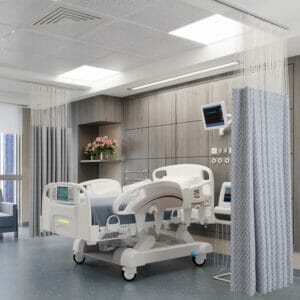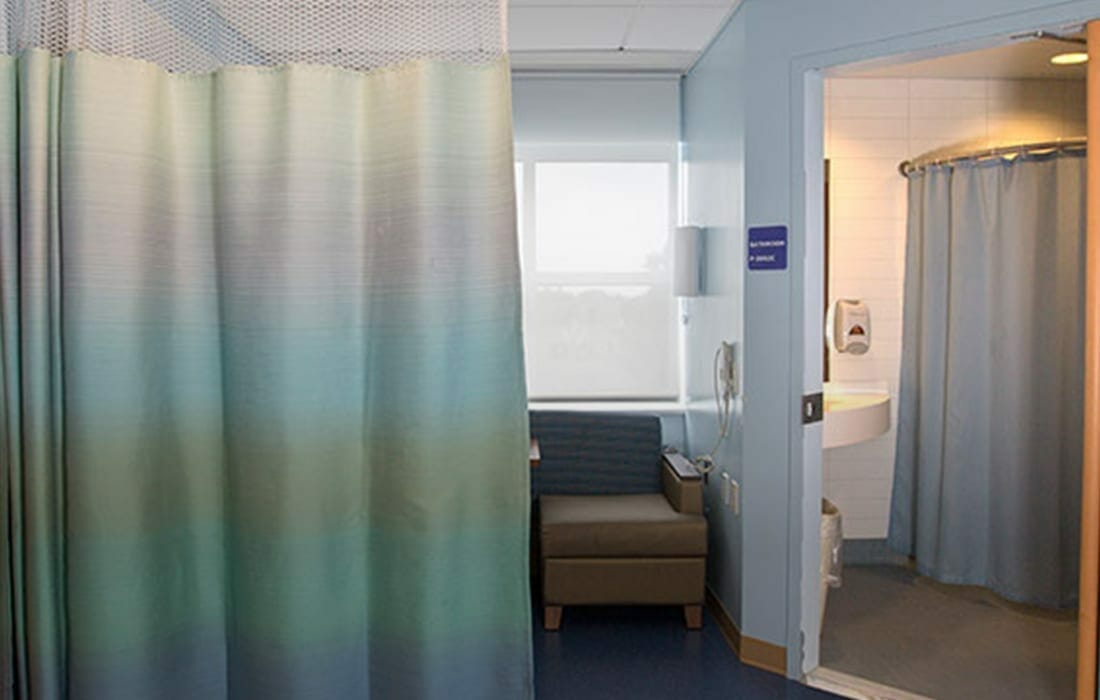In today’s fast-paced healthcare environment, hospitals are more than just treatment centers—they are spaces that must balance medical excellence with patient comfort, privacy, and safety. As hospitals continue to evolve in both infrastructure and standards of care, one element that remains vital but often overlooked is the privacy curtain.
High-quality privacy curtains are no longer a luxury; they are a necessity in modern hospitals. From enhancing patient dignity to supporting infection control efforts, these simple barriers serve complex purposes in clinical settings.
In this blog, we’ll explore why privacy curtains play a critical role in modern hospital design, how they contribute to efficient workflows, and what features facilities should prioritize when selecting curtain systems. Whether you manage a large-scale medical center or oversee a small community hospital, understanding the value of premium curtain systems can help transform patient care and operational efficiency.
The Role of Privacy in Healthcare Has Evolved
Patient expectations have shifted dramatically in the last decade. Today’s patients want more than quality medical care—they expect respect for personal space, confidentiality, and comfort. Hospitals that fail to meet these expectations risk losing trust and damaging their reputations.
While architectural layouts and private rooms help, not every facility has the luxury of major renovations. That’s where privacy curtains come in: they offer a flexible, cost-effective, and practical solution for maintaining patient dignity without sacrificing space or workflow efficiency.
In shared rooms, emergency departments, outpatient areas, and surgical prep zones, privacy curtains provide visual separation, reduce noise, and establish clear personal boundaries—all of which contribute to a better patient experience.
Infection Control: One Curtain Can Make a Big Difference
Infection control is a top concern in any hospital setting. While handwashing, PPE, and sanitization routines are critical, the surfaces around patients also play a major role in the spread—or prevention—of harmful pathogens.
Privacy curtains, if not chosen wisely, can become vectors for healthcare-associated infections (HAIs). That’s why modern facilities are investing in curtains with:
- Antimicrobial coatings to reduce surface bacteria and viruses.
- Quick-change systems for fast replacement during room turnovers.
- Machine-washable or wipeable fabrics to streamline cleaning protocols.
High-quality privacy curtains act as a first line of defense in infection control strategies, particularly in areas with high patient turnover or limited isolation rooms.

Enhancing Patient Experience Through Simple Design
While hospitals often focus on major renovations and high-tech solutions, small changes can make a big impact. Privacy curtains—especially those designed with calming colors, soft textures, and modern prints—can positively affect patient mood and perception.
Patients recovering from surgery, receiving diagnoses, or undergoing routine treatments deserve spaces that feel safe and personalized. The right curtain design can:
- Reduce stress and anxiety.
- Create a more inviting, less clinical atmosphere.
- Improve sleep and rest during extended stays.
In essence, privacy curtains contribute not just to physical separation but also emotional well-being, helping patients feel seen, respected, and cared for.
Support for Clinical Efficiency and Workflow
Privacy curtains aren’t just beneficial for patients—they’re essential for clinical staff, too. In busy hospital environments, where every second counts, curtains that are easy to move, clean, or replace can save valuable time.
The best curtain systems help staff:
- Quickly isolate patients during procedures or emergencies.
- Set up temporary treatment zones without extensive equipment.
- Reduce cross-contamination during patient transitions.
Incorporating easy-glide tracks, color-coded curtain panels, or touchless partition systems further improves efficiency and workflow, making daily tasks smoother and safer for everyone involved.
Compliance with Safety and Privacy Regulations
Modern hospitals are subject to numerous codes and compliance standards. When selecting or upgrading privacy curtains, it’s essential to ensure that your solutions align with:
- HIPAA guidelines, ensuring visual privacy during care.
- NFPA 701 fire safety requirements for curtain materials.
- ADA accessibility standards for ease of use by all patients.
Compliance isn’t just about avoiding fines—it’s about delivering high-quality care in a safe, respectful environment. Choosing the right curtain system demonstrates a hospital’s commitment to both patient safety and regulatory excellence.
Privacy Curtains vs. Traditional Dividers
Some hospital administrators still debate whether to use privacy curtains or structural room dividers. While each has its pros and cons, privacy curtains offer significantly more flexibility—especially in dynamic, high-traffic areas like ERs and trauma units.
Compared to traditional walls or sliding panels, privacy curtains:
- Take up less space.
- Cost significantly less to install and maintain.
- Can be quickly replaced or repositioned.
To better understand how privacy curtains stack up against other room separation options, check out our full breakdown in this comparison of privacy curtains vs. traditional room dividers.
Design Innovations That Serve Modern Needs
Today’s curtain systems are smarter than ever, offering features tailored to hospital-specific needs. When evaluating your options, look for innovations such as:
- Interchangeable mesh tops for fire safety compliance.
- Snap panels that allow for partial curtain replacement.
- Color-coded systems to match departments or infection control zones.
- Custom prints that enhance branding or wayfinding.
These design advancements ensure that your curtains do more than just divide space—they also align with facility branding, simplify maintenance, and improve overall user experience.
Sustainability Is a Growing Priority
Hospitals are increasingly focused on environmental impact, and curtain systems are no exception. Eco-conscious hospitals now look for privacy curtains that:
- Are made from recycled or low-impact materials.
- Support long-term durability, reducing waste.
- Come from manufacturers who follow green production practices.
Investing in sustainable products isn’t just a PR move—it’s part of a larger healthcare trend toward environmental responsibility, something that patients and staff are beginning to expect.
Making the Right Choice for Your Hospital
Choosing high-quality privacy curtains may seem like a small operational decision, but it has far-reaching implications for patient safety, staff efficiency, compliance, and brand perception.
If you’re not sure where to start, consider the following checklist:
- ✅ Are the curtains antimicrobial and easy to sanitize?
- ✅ Do they meet fire safety and privacy regulations?
- ✅ Can they be replaced or laundered with minimal disruption?
- ✅ Do they match the aesthetic and functional needs of your space?
- ✅ Are they compatible with your existing track systems?
For a more detailed guide on what to look for, refer to our comprehensive resource on how to choose the best privacy curtains for healthcare settings.
Why Hospitals Trust HAIGuard™

When it comes to privacy curtain solutions, HAIGuard™ is proud to support healthcare facilities with products that combine hygiene, durability, and design innovation. Our curtains are designed with the real-world needs of hospitals in mind—from infection prevention and code compliance to aesthetics and ease of use.
With HAIGuard™, hospitals don’t have to choose between function and form. We provide scalable solutions for every department, helping facilities stay compliant, efficient, and patient-focused.
Every modern hospital needs to prioritize privacy—and high-quality curtains are one of the most versatile, affordable, and effective tools for doing just that. These simple barriers can play a massive role in improving patient satisfaction, enhancing infection control, supporting workflow efficiency, and meeting essential compliance standards.
As healthcare continues to evolve, privacy curtains remain an essential part of the modern medical landscape—not just as physical dividers, but as key elements of thoughtful, high-quality care.
Whether you’re upgrading a single unit or outfitting a new hospital wing, don’t underestimate the value of investing in the right curtain system. Because when it comes to patient care, privacy isn’t optional—it’s essential.








